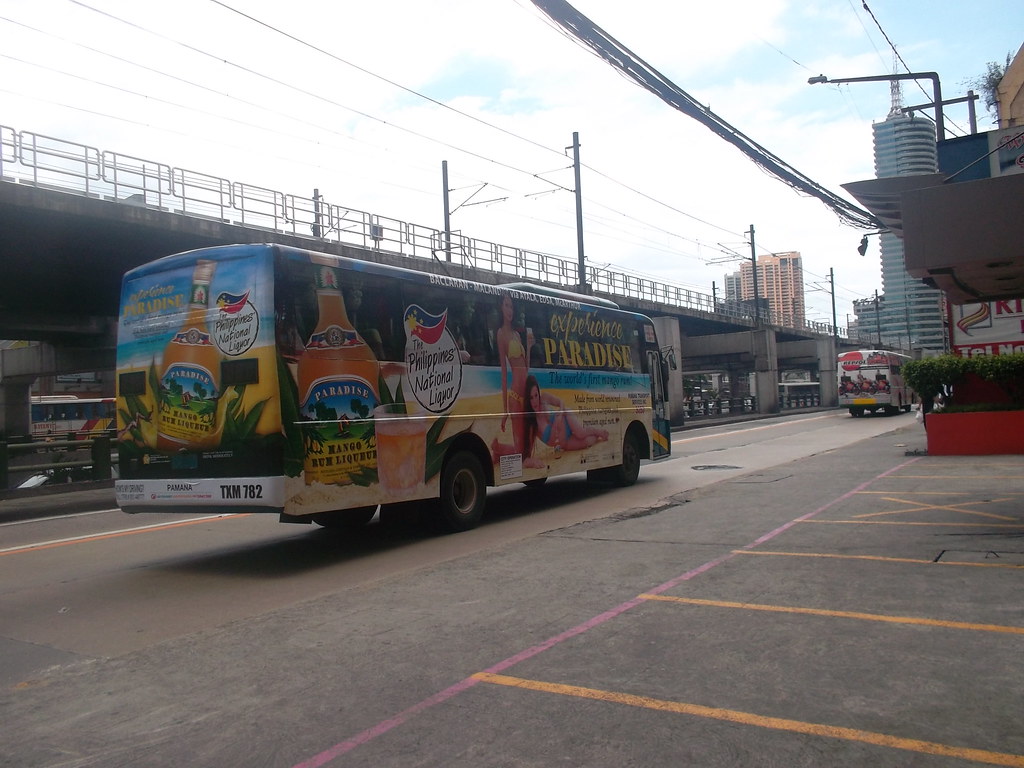Take Full Advantage Of Direct Exposure with Transit Advertising Philippines
Take Full Advantage Of Direct Exposure with Transit Advertising Philippines
Blog Article
Comprehending the Duty of Transit Advertising And Marketing in Enhancing Brand Visibility and Customer Interaction
Transportation advertising has emerged as a pivotal aspect in the marketing landscape, providing one-of-a-kind opportunities for brand names to elevate their presence and involve consumers efficiently. With the capacity to reach a captive and varied target market throughout their daily commutes, these advertising and marketing techniques are not just about exposure; they have to do with developing meaningful connections with potential consumers. As we discover the diverse benefits and cutting-edge methods within transit advertising and marketing, it becomes necessary to take into consideration just how these components jointly affect customer assumption and actions, questioning about their long-term effect on brand name commitment.
Meaning of Transit Advertising
Transportation advertising describes the method of advertising items, services, or brands through ads put in and around mass transit systems. This form of advertising includes a variety of positionings, consisting of posters on buses and trains, digital displays at transit stations, and covers on the exterior of vehicles. It intends to reach a varied target market, profiting from the high foot web traffic related to public transportation.
Transit advertising is tactically positioned to record the interest of commuters, who often invest considerable time taking a trip or waiting. By incorporating ads into the everyday regimens of people, brands can develop a long lasting impression and foster brand name recognition. The tool is particularly reliable in urban settings, where mass transit is a primary mode of traveling.
Additionally, transit advertising and marketing can facilitate localized targeting, permitting organizations to get to specific demographics based upon transportation courses and station places. As city populaces expand and the use of public transportation rises, this advertising technique has gotten prominence as an important component of incorporated advertising methods. The dynamic nature of transit marketing, combined with its ability to involve customers in a restricted setting, emphasizes its significance in contemporary advertising and marketing techniques.
Benefits of Transit Marketing
The efficiency of transportation advertising and marketing depends on its capability to supply a plethora of advantages to brands looking for to improve visibility and engagement. Among the key benefits is the comprehensive reach it supplies; transportation advertisements can successfully target varied demographics across metropolitan locations, reaching both pedestrians and travelers alike. This broad exposure substantially increases brand name understanding.
Another benefit is the high regularity of impacts. As transportation cars follow recognized routes and quit at multiple areas, they create repetitive direct exposure that enhances brand messages. This regularity cultivates experience, which is critical in customer decision-making.
Transportation marketing is likewise economical compared to other media systems. Provided its extensive reach and potential for high impressions, brand names usually experience a reduced expense per thousand perceptions (CPM), maximizing their advertising and marketing spending plan.
Furthermore, transit ads can develop a sense of community link. By lining up with local transit systems, brands can reverberate with local audiences and cultivate a feeling of regional satisfaction. This localized strategy improves brand commitment and interaction, making transit advertising a compelling option for services aiming to strengthen their presence on the market.

Effective Approaches for Transit Campaigns
To make best use of the impact of transit campaigns, brands should take advantage of critical preparation and execution customized to their target market. Initially, identifying the market characteristics of the audience making use of public transit is critical. This enables brand names to develop individualized messaging that reverberates with potential clients.
Following, selecting the ideal transportation mediums is necessary. Whether utilizing bus wraps, subway posters, or electronic displays, each medium has distinct benefits that can enhance visibility. As an example, lively visuals on bus wraps can stand out, while electronic advertisements more tips here can be updated often to show timely promos.
In addition, integrating a cohesive branding method throughout transportation systems ensures uniformity and strengthens the brand's identity. Using eye-catching designs and unforgettable taglines will reinforce brand recall among commuters.
Lastly, timing is an essential factor in carrying out effective transit campaigns. Introducing campaigns during top travel hours or neighborhood occasions can dramatically raise presence and involvement. By using these approaches, brand names can effectively harness the potential of transit advertising, cultivating better recognition and connection with their target audience. Ultimately, a well-executed transit campaign can drive significant development in brand name visibility and customer interaction.

Measuring Influence and Involvement
In examining the effectiveness of transit marketing campaign, precise measurement of influence and involvement is crucial for brand names seeking to optimize their advertising and marketing methods. Metrics such as reach, frequency, and impacts offer fundamental data to analyze exposure. Analyzing these aspects helps establish exactly how several prospective clients are exposed to the ads during their everyday commutes.
Involvement can be additional determined through customer interactions, such as internet site traffic, social media sites discusses, and straight responses to calls-to-action featured in the advertisements. Making use of devices like QR codes or one-of-a-kind URLs can assist in monitoring of consumer habits straight connected to transit campaigns. Surveys and feedback mechanisms likewise function as valuable techniques to collect qualitative information on customer understandings and recall of the ad.
In addition, advanced analytics and acknowledgment versions can correlate transit exposure with succeeding buying habits, supplying understandings into the roi. By utilizing a thorough strategy that incorporates qualitative and quantitative steps, brands can establish a nuanced understanding of their transit marketing effect. Eventually, this data-driven strategy makes it possible for brands to fine-tune their campaigns, ensuring they resonate successfully with target market and improve overall brand exposure.
Study of Successful Campaigns
Successful transit ad campaign offer as engaging examples of how reliable approaches can boost brand name exposure and engagement. Transit Advertising Philippines. One notable instance is the "I Love New york city" project, which transformed the city's image and brought in numerous visitors. By using train advertisements, billboards, and bus wraps, the campaign produced a solid, cohesive brand name identification, causing a considerable uptick in tourist and neighborhood company patronage
An additional exemplary project is Coca-Cola's "Share a Coke" initiative, which leveraged transit advertising to customize the brand name experience. By including popular names on advertising products across various transit systems, Coca-Cola fostered a much deeper emotional link with consumers, motivating them to share their experiences on social media sites.
Furthermore, see this site the "Got Milk?" project properly made use of public transportation advertisements to get to a wide target market, reinforcing the message of the relevance of milk in a balanced diet plan. The campaign saw a quantifiable increase in milk consumption in target demographics.
These study highlight that when carried out attentively, transportation advertising can considerably boost brand name visibility, foster consumer involvement, and drive measurable results, showing its crucial duty in contemporary advertising and marketing approaches. - Transit Advertising Philippines
Conclusion
In conclusion, transportation marketing offers as an essential tool for boosting brand exposure and promoting customer engagement. Inevitably, the ability to determine engagement and analyze effective situation researches highlights the performance of transportation marketing in driving brand name loyalty and consumer communications.
Transportation advertising has actually emerged as a pivotal aspect in the advertising landscape, supplying special opportunities for brands to raise their visibility and involve consumers efficiently.Furthermore, transit advertising can help with localized targeting, enabling services to get to details demographics based on transportation routes and station areas.In examining the effectiveness of transportation advertising campaigns, precise measurement of my site influence and involvement is crucial for brands seeking to optimize their advertising methods.Successful transportation advertising and marketing campaigns offer as engaging examples of exactly how effective approaches can raise brand presence and interaction.In verdict, transit advertising offers as a crucial device for improving brand name visibility and promoting customer interaction.
Report this page